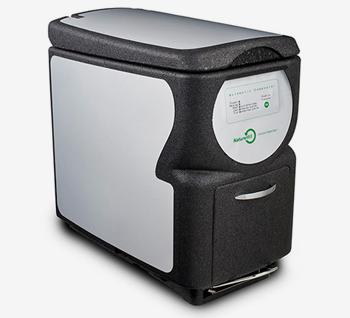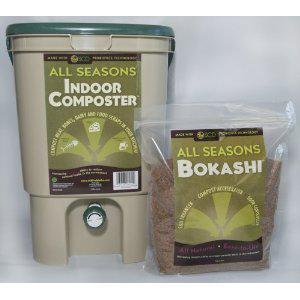Believe it or not, you can compost indoors very effectively, and no it will not smell up your house or apartment. Here are two types of indoor composters to chose from:
Automatic Indoor Composter – This little baby works like magic. It can take all kinds of food, including meat, fish and dairy that other composters can’t take. It’s compact, can fit under a sink or in a cabinet and consumes and aerates large amounts of food rather quickly. You can have a full harvest of ready-to-use compost in as little as 2 weeks with this thing. It eliminates having to collect your scraps to take outside, plus, there’s no odor at all. PROS: Incredibly easy to use and low-maintenance. Takes all kinds of foods, doesn’t take up much space. No need to keep collecting food and dragging it outside. CONS: Expensive. One of these babies is gonna run you about $400. It does use electricity, and needs to stay plugged in all the time, so it’s not helping lower your carbon footprint by much.
Bokashi Indoor Composter -This composter was developed in Japan, and
Bokashi literally translates as “fermented matter”. How it works is all kinds of foods are added to an airtight container, (including meat, fish, dairy and bones), then Bokashi pellets which contain microbes are added to the mix. This type of composting breaks down food waste without aeration through a process called
fermentation (kinda like wine), as opposed to
putrefication, which is how traditional compost bins work. In as little as 10 days you can bury the contents of the bucket in your garden or add it to an existing compost pile, as a catalyst. PROS: Easy to use, uses no electricity, no odor at all, makes compost quickly. There are several local organizations that will pick your compost up for you. Good way to compost during the winter. Affordable. The bin itself only costs around $50. CONS: You have to keep buying the microbes to add to the pile. Must chop up all food into smaller sizes. The food doesn’t completely break down into soil in this bucket, it will do that only when it’s buried in a garden or added to a traditional compost pile. (Critters may be an issue here).
Next time: Collecting/Prepping Food to Compost
- Do you indoor compost? What system do you use?




